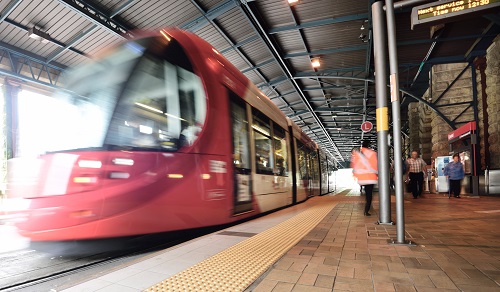Commuters rate reliability over speed

21 August 2017
As we try to keep pace in a fast-moving world, our desire for reliable travel is becoming increasingly important. Being late increases stress, reduces productivity, costs money and diminishes our enjoyment of life experiences.
We don’t always remember when a trip was quicker than usual, but if a journey takes longer than anticipated, the memory lingers and if often shared with others. Unreliable journeys account for 20-30% of delays experienced on our road networks and beyond the direct impact, reliability, or lack thereof, also translates to having to factor in contingency commuting time.
The 2010 Transport User Analysis Surveys conducted in South East Queensland asked commuters to rank their travel considerations in order of importance. Two thirds of respondents ranked reliability in their top three considerations. One half of respondents ranked the shortest trip in their top three. Busy commuters have an increasing appetite for reliability rather than speed.
While the cost to road users is high, the cost to owners and operators of roads is higher – less reliable public transport systems require greater contingency fleets to maintain the same level of capacity and less reliable road networks require more systems and staff to help manage them.
The cause
Typically, the greatest impact to the reliability of a road network will be non-recurrent events which include traffic incidents, work zones, weather, traffic control devices, special events and seasonal variations.
We as users also have a big role to play – 90% of crashes are a result of human error. Add to this issues with road design and we’ve got a recipe for unreliable transport networks.
So how do we go about tackling reliability problems? First we must find a way to measure reliability, something that isn’t a simple task as the metric needs to be shaped by the networks it is looking to describe. We also need to get a better understanding of the specific reliability challenges our networks face.

Delivering more reliable networks
While there is no one-size-fits all approach, delivering more reliable transport networks first requires an integrated approach across strategic policies that set out the focus of investment, together with operational policies which set the planning parameters.
Non-recurrent events will invariably impact the broader network, often cascading across modal networks. But the availability of surrounding networks is also important for delivering better reliability. These networks can be used to help minimise immediate impacts of non-recurrent events, and offer alternative paths for commuters. This makes it critical to develop holistic whole-of-transport system strategies.
Non-recurrent events are ‘risks’ to reliability. Our strategies should therefore seek to reduce the likelihood and impact of these risks. When it comes to measuring the impact of these events, we must consider three components. The intensity of the event for example, partial or full road closure bought about by a breakdown, the severity of the event, i.e the duration – the time between identification and clearance, and the extent, which is the geographical coverage. Our strategies must address these specific risks our networks face.
Role of technology
Emerging and connected technologies and the Internet of Things (IOT) can help us to better tackle reliability risks. Better systems support more adaptive and efficient transport network management, providing us with greater control over the network and reducing the likelihood of an event. The IOT allows us to gather and distribute information more effectively and broadly, helping us to reduce the duration and intensity of an event.
Connected technology also allows us to do something far more powerful. Even with immediate access to perfect information there is still one final step in the information chain – our own understanding or interpretation. Connected technology gives us the opportunity to leave the decision making to something far more calculated and rational – our personal devices and technology systems. Taking decision making away from the end user can help us to limit our contribution to unreliable trips.
One of the things WSP is exploring is the use of Internet of Things in conjunction with Intelligent Transportation technologies to support clear and efficient communication between users and providers and thus improve response times and informed decision making. We are also making use of ‘Reliability Toolkits’ to develop collective tactical strategies that support transport systems and networks to be more resilient and reliable.

Where to next
Despite all of this, reliability is still critically under-represented in transport scheme appraisal and there are obvious challenges.
A scheme that delivers travel time or safety benefits will not necessarily deliver reliability improvements but a scheme which delivers more reliable travel will often deliver benefits to safety and travel time.
If we want to deliver more reliable transport networks, we need to embrace emerging technologies to develop more useful systems, manage our non-recurrent risks through the development of appropriate operational and system strategies and ensure that we make delivering good reliability outcomes front and centre of our approach.
--ENDS--
Source: WSP - www.wsp-pb.com
Contact: N/A
External Links: To read more about WSP’s work in this area click here.
Recent news by: WSP